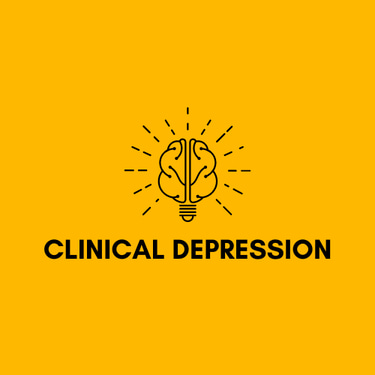For Questions: Text (833)233-0869
Virtual Mental Health Treatment: A Comprehensive Approach to Managing Anxiety and Depression


Introduction
In recent years, the rise of virtual mental health treatment has transformed the way individuals access care for anxiety and depression. The convenience, accessibility, and effectiveness of virtual therapy have made it a popular choice for many who seek mental health support. This article explores the benefits, challenges, and effectiveness of virtual mental health treatment, with a particular focus on how it can help individuals struggling with anxiety and depression.
Understanding Anxiety and Depression
Before diving into virtual mental health treatment, it's essential to understand the conditions it often addresses: anxiety and depression. These two mental health disorders are among the most common, affecting millions of people worldwide.
Anxiety is characterized by excessive worry, fear, or nervousness. It can manifest in various forms, including generalized anxiety disorder (GAD), panic disorder, social anxiety disorder, and specific phobias. Symptoms may include restlessness, rapid heartbeat, difficulty concentrating, and sleep disturbances.
Depression, on the other hand, is a mood disorder marked by persistent feelings of sadness, hopelessness, and a lack of interest or pleasure in activities once enjoyed. Symptoms can range from fatigue, changes in appetite, and sleep issues to feelings of worthlessness and thoughts of self-harm or suicide.
Both conditions can significantly impact daily life, making it crucial to seek effective treatment options.
The Emergence of Virtual Mental Health Treatment
Virtual mental health treatment, also known as teletherapy or online therapy, has gained momentum due to technological advancements and the growing demand for accessible mental health care. The COVID-19 pandemic further accelerated this trend, as lockdowns and social distancing measures made in-person therapy sessions challenging or impossible.
Virtual mental health treatment involves delivering therapy and counseling services via video calls, phone calls, or text-based platforms. This approach allows individuals to connect with licensed therapists from the comfort of their homes, eliminating the need for travel and reducing the stigma often associated with seeking mental health care.
Benefits of Virtual Mental Health Treatment
Virtual mental health treatment offers numerous benefits, particularly for those dealing with anxiety and depression:
Accessibility: Virtual therapy eliminates geographical barriers, making it easier for individuals in remote or underserved areas to access mental health care. This is especially beneficial for those living in rural regions where mental health professionals may be scarce.
Convenience: Scheduling and attending therapy sessions become more manageable with virtual treatment. Patients can choose appointment times that fit their schedules, reducing the need to take time off work or arrange childcare.
Comfort and Privacy: Many people find it more comfortable to discuss personal issues from their own homes. Virtual therapy provides a level of privacy that traditional in-person sessions may not, helping to reduce the stigma around seeking help.
Continuity of Care: For individuals who travel frequently or have unpredictable schedules, virtual therapy ensures continuity of care. They can continue their sessions from anywhere with an internet connection, maintaining progress in their treatment.
Cost-Effectiveness: Virtual mental health treatment can be more affordable than traditional therapy. Patients save on travel expenses, and some therapists may offer lower rates for online sessions. Additionally, many insurance plans now cover teletherapy services.
The Effectiveness of Virtual Mental Health Treatment
Research has shown that virtual mental health treatment can be as effective as in-person therapy for many individuals, particularly those with anxiety and depression. Several studies have highlighted the positive outcomes of virtual therapy, including:
Cognitive Behavioral Therapy (CBT): CBT, a widely used therapeutic approach for anxiety and depression, has been effectively delivered through virtual platforms. Studies have found that online CBT can lead to significant reductions in symptoms of anxiety and depression, similar to face-to-face sessions.
Mindfulness-Based Therapy: Virtual mindfulness-based therapies, such as mindfulness-based stress reduction (MBSR), have shown promise in reducing anxiety and depression symptoms. These therapies teach individuals to focus on the present moment, helping them manage negative thoughts and emotions.
Group Therapy: Virtual group therapy sessions can provide individuals with a sense of community and support. For those dealing with anxiety and depression, knowing they are not alone in their struggles can be incredibly beneficial. Online group therapy has been shown to improve participants' mental health by fostering connections and shared experiences.
Flexibility in Treatment Modalities: Virtual platforms offer a range of therapeutic modalities, from video and phone sessions to text-based therapy. This flexibility allows individuals to choose the format that best suits their needs and comfort levels, contributing to the overall effectiveness of the treatment.
Addressing the Challenges of Virtual Mental Health Treatment
While virtual mental health treatment offers many benefits, it is not without its challenges. Understanding and addressing these challenges is essential to ensure that individuals receive the best possible care.
Technology Barriers: Not everyone has access to reliable internet or the necessary devices for virtual therapy. This digital divide can limit the accessibility of virtual mental health treatment for some individuals, particularly those from low-income households.
Lack of Personal Connection: Some individuals may feel that virtual therapy lacks the personal connection of in-person sessions. Body language and non-verbal cues, which are essential components of communication, may be harder to perceive through a screen.
Confidentiality Concerns: While virtual therapy platforms strive to ensure confidentiality, there are concerns about data security and privacy. It's crucial for both therapists and clients to use secure, HIPAA-compliant platforms to protect sensitive information.
Emergency Situations: In cases of severe mental health crises, virtual therapy may not be sufficient. Individuals experiencing suicidal thoughts or other emergencies may require immediate, in-person intervention.
Adapting to New Formats: Both therapists and clients may need time to adapt to the virtual format. Therapists must develop new skills to engage and support clients effectively online, while clients may need to adjust to the differences in interaction.
How to Get Started with Virtual Mental Health Treatment
For those considering virtual mental health treatment for anxiety or depression, here are some steps to get started:
Research and Choose a Platform: Numerous platforms offer virtual mental health services, such as BetterHelp, Talkspace, and Amwell. Research the options available to find one that suits your needs, preferences, and budget.
Check for Licensed Therapists: Ensure that the platform you choose has licensed and qualified therapists. Look for credentials and reviews to make an informed decision.
Consult with Your Insurance Provider: Many insurance plans now cover virtual mental health treatment. Check with your insurance provider to understand your coverage and any potential out-of-pocket costs.
Schedule a Consultation: Most platforms offer initial consultations or free trials. Use this opportunity to meet with a therapist, discuss your concerns, and determine if virtual therapy is the right fit for you.
Prepare for Your Sessions: Find a quiet, private space for your therapy sessions. Ensure that your internet connection is stable and that you have the necessary devices ready.
Commit to the Process: Like any form of therapy, virtual mental health treatment requires commitment and active participation. Attend your sessions regularly, engage with your therapist, and practice the coping strategies and techniques you learn.
The Future of Virtual Mental Health Treatment
As technology continues to evolve, so too will the landscape of virtual mental health treatment. The integration of artificial intelligence, virtual reality, and other emerging technologies holds the potential to enhance the effectiveness and accessibility of online therapy further.
For instance, virtual reality (VR) therapy is already being explored as a treatment for anxiety disorders, allowing individuals to confront and manage their fears in a controlled, immersive environment. AI-powered chatbots and mental health apps are also providing supplemental support, offering resources and tools that individuals can access between therapy sessions.
Moreover, the increasing acceptance and normalization of virtual mental health treatment are likely to reduce the stigma associated with seeking help. As more people share their positive experiences with online therapy, others may feel encouraged to explore this option for themselves.
Conclusion
Virtual mental health treatment has emerged as a powerful tool in the fight against anxiety and depression. Its accessibility, convenience, and effectiveness make it a viable option for individuals seeking support. While there are challenges to overcome, the benefits of virtual therapy are clear, offering a lifeline to those who might otherwise struggle to access mental health care.
As the field of virtual mental health treatment continues to grow and evolve, it holds the promise of making mental health support more accessible to all. Whether you're dealing with anxiety, depression, or other mental health concerns, virtual therapy could be the key to finding the help and healing you need.
©2025
Clinical Depression
For Questions: Text
(833) 233-0869
